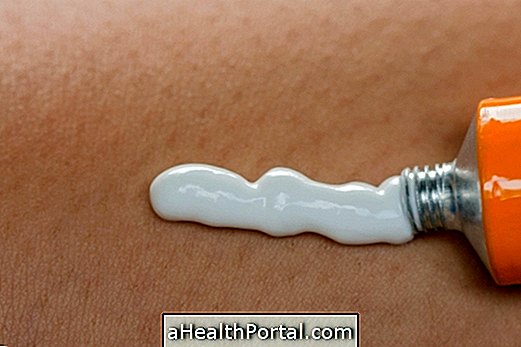Idiopathic thrombocytopenic purpura is an autoimmune disease in which the body's own antibodies destroy blood platelets, resulting in a marked reduction of such cells. When this happens, the body has more difficulty stopping bleeding, especially in the case of sores and strokes.
Due to the lack of platelets, it is also very common that one of the first symptoms of thrombocytopenic purpura is the frequent appearance of purple spots on the skin at various places in the body.
Depending on the total number of platelets and the symptoms presented, your doctor may only advise you to take extra care to avoid bleeding, or to start treatment for the disease, which usually includes using medicines to decrease the immune system or increase the number of cells in the blood.

Main symptoms
The most common symptoms of idiopathic thrombocytopenic purpura include:
- Ease of staying with purple spots on the body;
- Small red spots on the skin that look like a bleeding beneath the skin;
- Ease of bleeding from the gums or nose;
- Swelling of the legs;
- Presence of blood in the urine or stool;
- Increased menstrual flow.
However, there are also many cases where purpura does not cause any symptoms, and the person is diagnosed with the disease only because it has a blood platelet count below 10, 000 / mm³.
How to confirm the diagnosis
Most of the time the diagnosis is made through observation of the symptoms and blood test, and the doctor will try to eliminate other possible diseases that cause similar symptoms. In addition, it is also very important to evaluate if you are not using any medicine, such as aspirin, that may be causing such effects.
Possible causes of the disease
Idiopathic thrombocytopenic purpura occurs when the immune system begins, in a wrong way, to attack the blood platelets themselves, causing a marked decrease in these cells. It is not yet known the exact reason why this happens and, therefore, the disease is called idiopathic.
However, there are some factors that seem to increase the risk of developing the disease, such as:
- Be woman;
- Have had any recent viral infection, such as mumps or measles.
Although it appears more often in children, idiopathic thrombocytopenic purpura can appear at any age, even though there are no other cases in the family.
How is the treatment done?
In cases where idiopathic thrombocytopenic purpura does not cause any symptoms and the number of platelets is not greatly reduced, the doctor may only advise to be careful to avoid strokes and wounds, as well as frequent blood tests to assess the number of platelets.
However, if there are symptoms or if the number of platelets is very low, treatment with medicines may be advised:
- Remedies that lower the immune system, usually corticosteroids such as prednisone: decrease the functioning of the immune system, thus reducing the platelet disruption in the body;
- Immunoglobulin injections : lead to rapid increase of platelets in the blood and usually the effect lasts for 2 weeks;
- Remedies that increase platelet production, such as Romiplostim or Eltrombopag: lead the bone marrow to produce more platelets.
In addition, people with this type of disease should also avoid using medicines that affect the functioning of platelets like aspirin or ibuprofen, at least without the supervision of a doctor.
In more severe cases, when the disease does not improve with the remedies indicated by the doctor, it may be necessary to have surgery to remove the spleen, which is one of the organs that produces more antibodies capable of destroying the platelets.






















